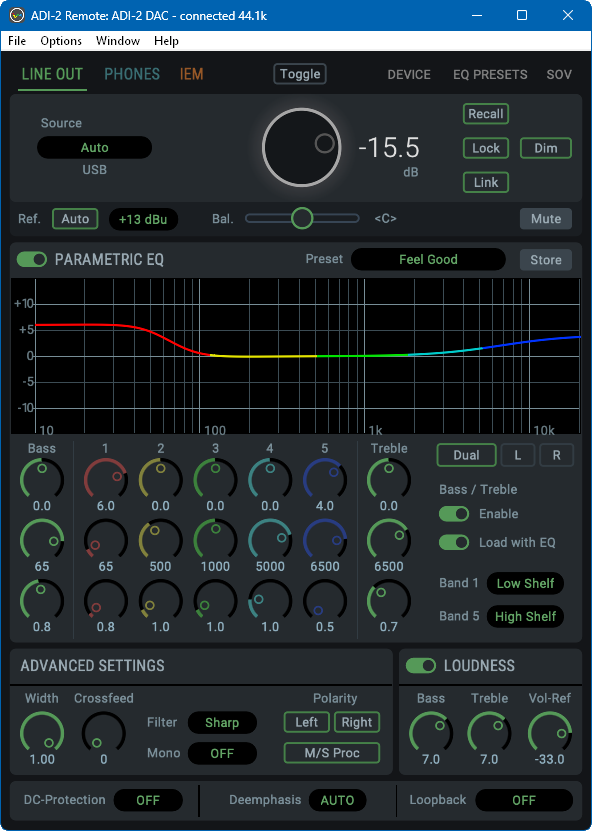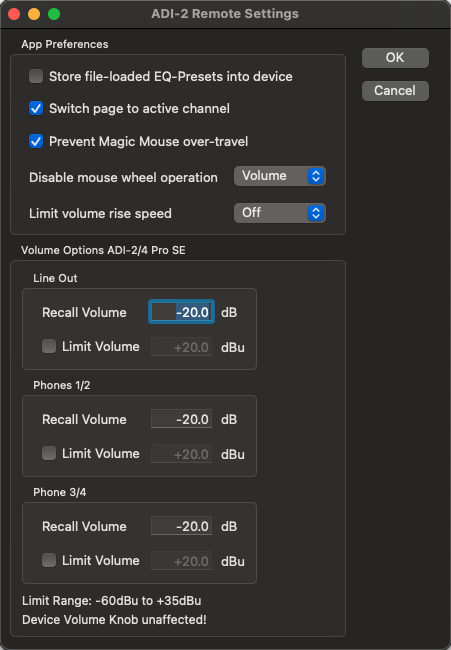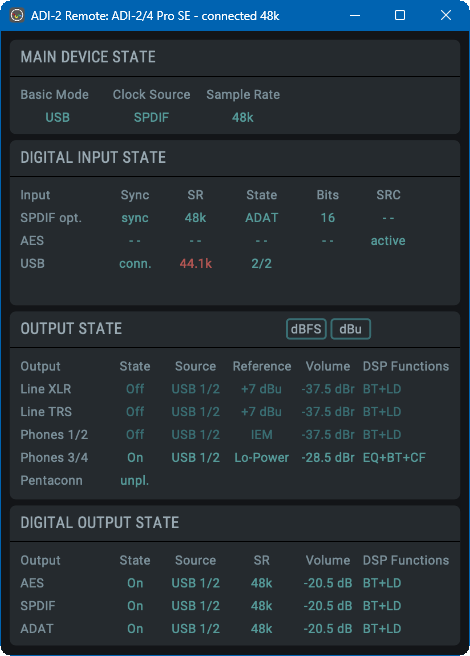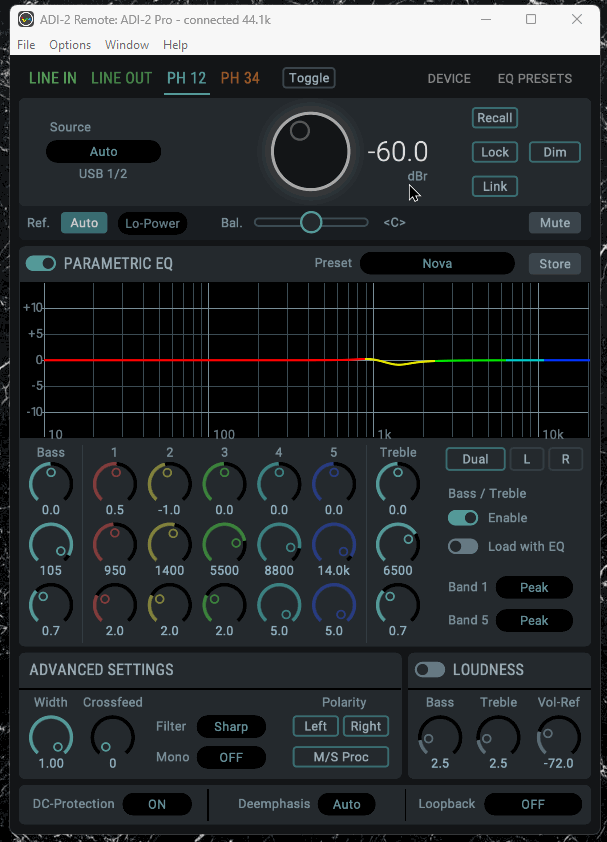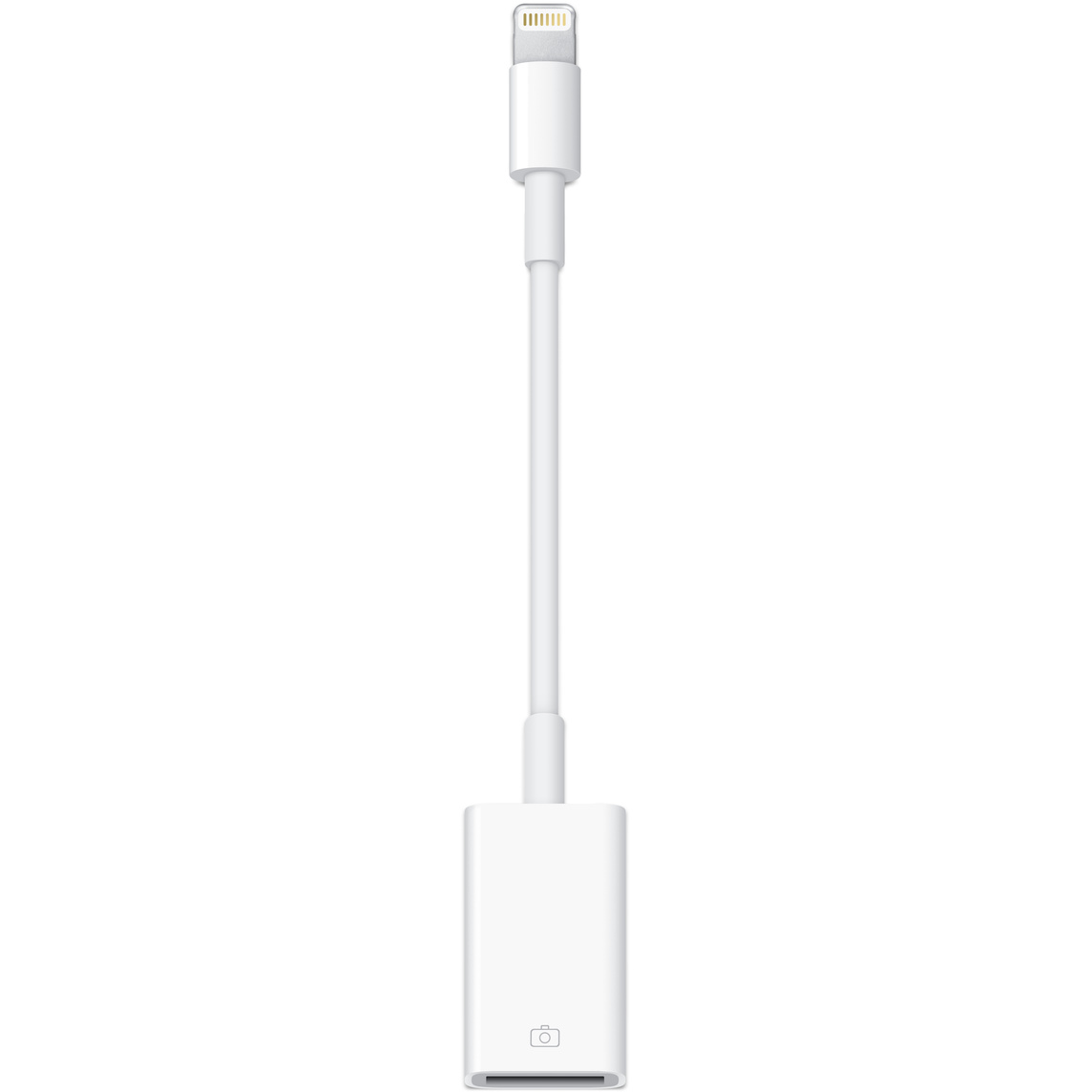Topic: ADI-2 Remote V 2.0 – we can't stop!
ADI-2 Series Remote for Mac, iPad and Windows, v 2.0
Prologue
In June 2023 RME surprised everyone by releasing the ADI-2 Series Remote for Windows, macOS and iOS, with the updated release 1.3 then available in September.
https://forum.rme-audio.de/viewtopic.php?id=38074
Version 1.3 already supported ADI-2 DAC, ADI-2 Pro (all versions) and ADI-2/4 Pro SE. Customer feedback was outstanding and extremely positive. This encouraged us to make the app even better. Here comes ADI-2 Remote v 2.0, and if you were blown away by version 1.3 then take a deep breath – it's getting exciting again!
Important
All ADI-2 units need a firmware update to support all new functions correctly. See below, section System Requirements.
New in version 2.0 (Part 1)
With version 1.3 there were situations where the app and the unit did not act in total sync. Simply because the very complicated operation rules inside the unit can not be easily replicated by sending a few remote commands. It takes additional, detailed status feedback plus knowledge on how the unit acts in various situations to let the app mirror the unit in all and every way. That’s exactly what we achieved in version 2.0, and one reason for another firmware update, as we had to add lots of status information that the app can request and read.
While this had been weeks of work some might not even notice it. For those we added a bunch of easy to notice goodies:
- The current sample rate was added to the window title
- The current input is shown in Auto mode below the Source button
- DC in signal is shown beside the Volume knob, and DC signal detected when the output is muted
- The EQ plot now has dB and Hz scales
- Features that are not available at higher sample rates are now properly shown as inactive. Buttons are greyed out then (not changed to Off), EQ curves are shown as inactive. This change affects PEQ, B/T, Loudness and CF. In case of B/T not only will the button be shown in grey, but the B/T part is also removed from the EQ plot (as it happens at 768 kHz).
- Similar improvements can be found in other places of the GUI. For example the Mute vs. buttons are greyed out depending on Dual Phones and Toggle states.
- When no unit is found the app will start with the last state instead of Demo mode. That last state is stored in two separate files (one device setup, one app settings) automatically.
- Under Windows the serial number is now used to differ between same models (already done on Mac). So using multiple DAC or Pro they will have individual settings and windows.
Volume Control (Part 2)
RME’s ADI series includes ground-breaking and unique measures to prevent excessive volume accidents, like slow volume ramp up, plug detection, Hi-Power warnings and operating help directly on screen. ADI-2 Remote v 2.0 brings that kind of expertise to an unprecedented app level. Our new measures and features:
- Dragging the Volume knob with the mouse has been made much slower. This prevents a quick change from mute to full volume by accident.
- Changing the Volume via mouse wheel is now disabled by default. If you insist on doing that go to the new Settings panel (F2) and enable it in there. Options are Off, Volume and All Controls.
- Mice might have ‘over-travel’ or free-wheeling, which is terrible with volume controls. It’s especially bad with Apple’s Magic (touch) Mouse. For that one there exists a new option ‘Prevent Magic Mouse over-travel’ in the macOS app, which is on by default.
- For very cautious people and people with disabilities we added Limit volume rise speed. It turns a ‘louder’ mouse drag into a slow ramp-up (as shown by the dB numbers beside the app’s Volume knob). ‘Quieter’ drags are not affected, so a right-drag too far can be easily fixed by releasing the mouse button - ramping-up will stop then.
- In the lower section of the Settings panel the analog outputs got individual Recall and Limit Volume settings. A Recall button has been added to all output pages on top of the Lock button. Now setting a predefined volume is only one mouse click away. Limit Volume sets the maximum volume. Defined in dBu, the desired dBu value can be read out in the Status window (see below). If the volume is turned up too high in the app, the message Limit reached! appears at the volume knob.
The State Overview Window (Part 3)
All very impressive, but…oh wait – here comes the State Overview window! This one is already impressive with the DAC, but on 2 Pro and even more 2/4 Pro it’s a mixture of life saver and education. The Status window gives you an easy to understand, fully detailed yet comprehensive overview of everything going on in the unit, with clear information what input signal is processed how and goes where. It’s absolutely brilliant! (Sorry that we’re so excited).
Hit F6 and put the State Overview window beside the main window. Change options on the pages or in the Device section and see in real-time what happens. The State Overview window includes three sections:
- Hardware State and Digital Input State basically show the same as the State Overview on the unit’s display. Non-audio and emphasis warnings are also shown here, as well as passed bit tests (Bit test passed).
- The Output State is packed with useful information. It shows the complete signal path and status of each analog output. The following information appears:
- Status: On, Off, plugged, unplugged. Includes Pentaconn state, Balanced mode, Rear TRS 3/4 and DC warnings.
- Source: USB 1/2, USB 3/4, Analog, AES, SPDIF optical, SPDIF coaxial
- Reference: the current reference level like +13 dBu, with Phones Lo-, Hi-Power and IEM.
- Volume: The current set volume value in dB. The display can be switched to dBu and dBr independently of the current mode using the buttons above. The dBu setting can also be used to read out the value for the Limit Volume option.
- DSP Functions: Lists the DSP FX activated at the respective output: PEQ (EQ), Bass/Treble (B/T), Loudness (LD) and Crossfeed (CF).
For 2 Pro and 2/4 Pro:
- The section Digital Output State holds the same information as the analog outputs..The digital outputs normally have 0 dB as volume and no DSP effects. With Digital Out Source - Main Out the table mirrors the status of the Line output
So this is ADI-2 Remote v 2.0. We hope you like it as much as we do! The available download for Windows and macOS is now the release version with installer and updated help.
Downloads Windows
Windows Firmware Update Tool (FUT): https://www.rme-audio.de/downloads/fut_madiface_win.zip
Windows app with installer, v2.1: https://www.rme-audio.de/downloads/adi2remote_win.zip
Downloads Mac
Mac Firmware Update Tool (FUT): https://www.rme-audio.de/downloads/fut_madiface_mac.zip
Mac app with installer, v2.1: https://www.rme-audio.de/downloads/adi2remote_mac.zip
Updated ADI-2 Remote 2.0 manuals
English: https://www.rme-audio.de/downloads/adi2remote_e.pdf
German: https://www.rme-audio.de/downloads/adi2remote_d.pdf
Note: The extended MIDI protocol will be available soon as download.
Note 2: the ADI-2 Remote 2.1 iPad is available in Apple's AppStore.
System Requirements
The app uses the same graphics engine as DigiCheck NG, so the same system requirements apply: Windows 10 or higher, and a graphics card that supports Direct3D 12. This might exclude some older computers, even when running Windows 10, for example with Intel integrated graphics HD4600 and HD4000.
Current (and required) Firmware versions:
ADI-2 DAC: USB=81, DSP=62
ADI-2 Pro: USB=267, DSP=128
ADI-2/4 Pro SE (Hw Rev 6): USB=72, DSP=40
ADI-2/4 Pro SE (Hw Rev.7): USB=209, DSP=40
Infos on the update to beta 4 are here: https://forum.rme-audio.de/viewtopic.ph … 40#p215540
Matthias Carstens
RME
